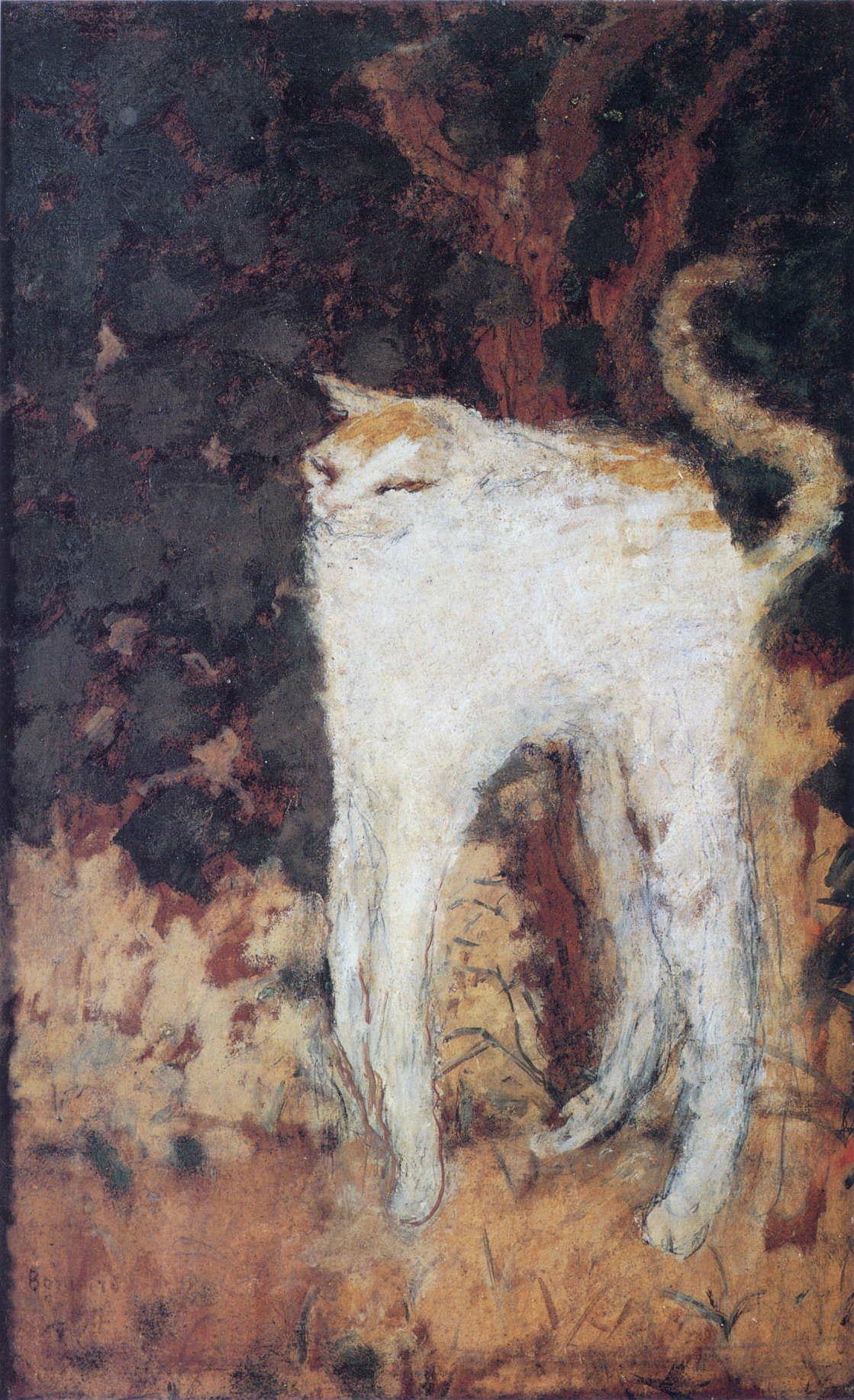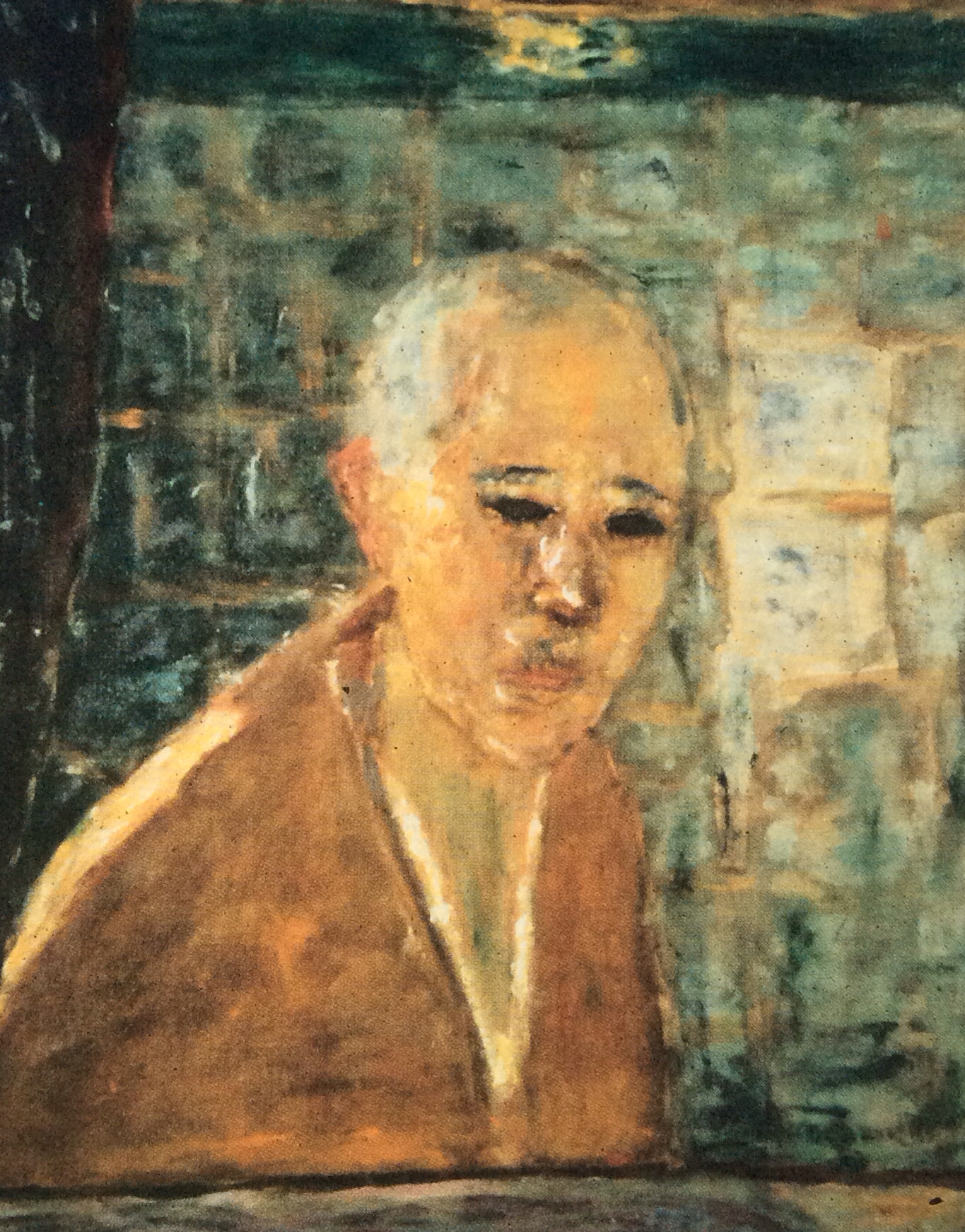



The White Cat
oil on canvas • 51 x 33 cm
Here, Bonnard uses distortion to create a humorous image of this cat arching its back. A strange animal, exaggeratedly arched on its paws, with its head drawn down into its shoulders, eyes like slits and a cunning expression. It seems both tame and wild.
The painter spent a long time deciding on the shape and the position of the paws, as can be seen in the preparatory drawings. The x-ray of this work also reveals many changes, some of which are actually visible to the naked eye. "Art is not nature" he used to say, to the extent that his White Cat has become almost a caricature, "a comical and humorous image created through the genius of its master who observed and understood it so well" (Elisabeth Foucart-Walter).
The decorative style of the painting – the prominence of the sinuous lines, the absence of any depth in the figure placed flat on the background – places this work from 1894 in the Nabi tradition. There is a Japanese inspiration in the bold, asymmetric composition as well as in the choice of subject – one that was very popular in the prints that Bonnard was so fond of. Hokusai (1760-1849) and Kuniyoshi (1797-1861) in particular had painted these familiar felines.
Throughout his work, Bonnard produced innumerable paintings that featured cats - sometimes as a simple detail, visible to a greater or lesser degree, sometimes, like The White Cat, as the central subject.
 Pierre Bonnard
Pierre Bonnard